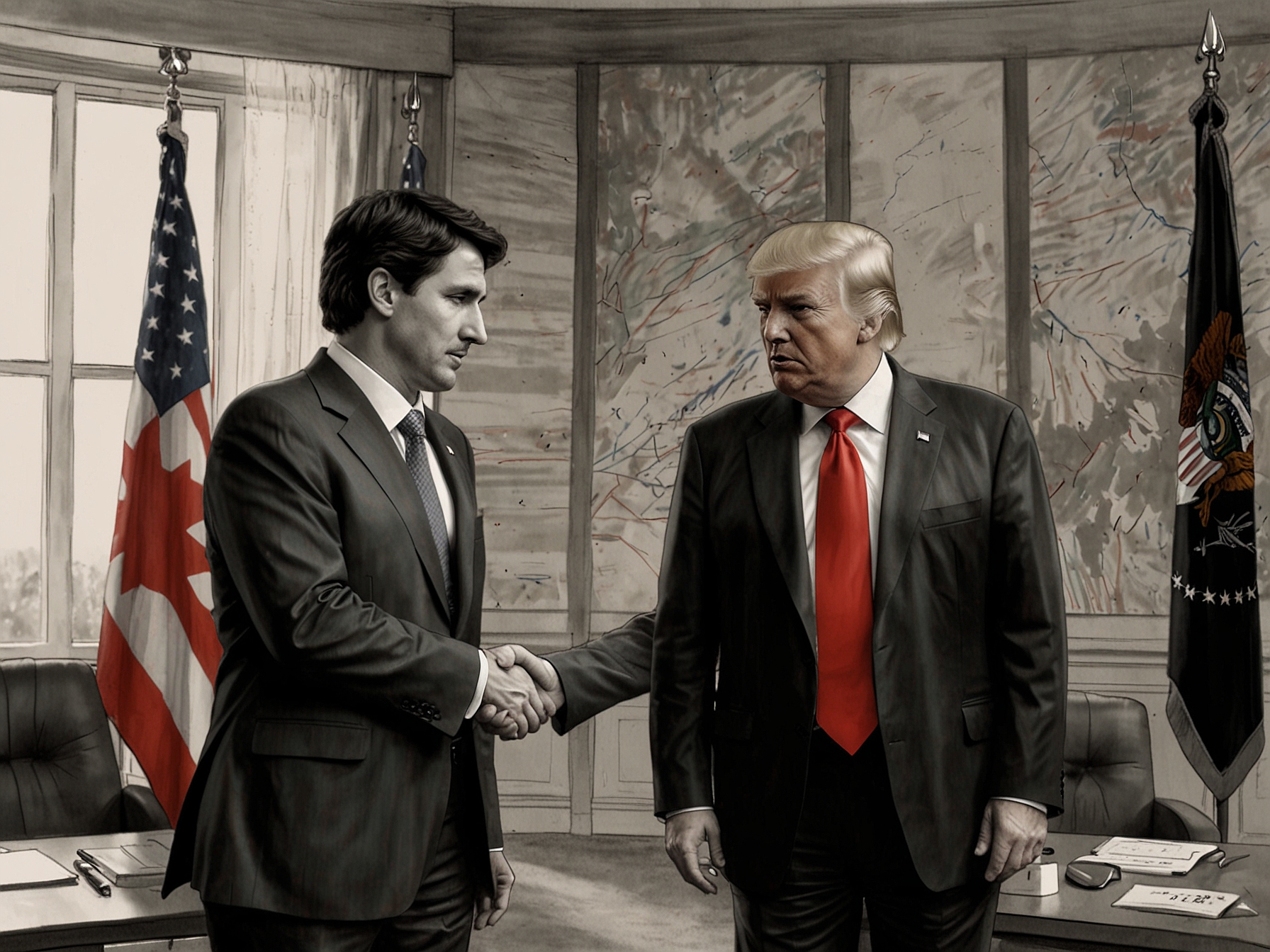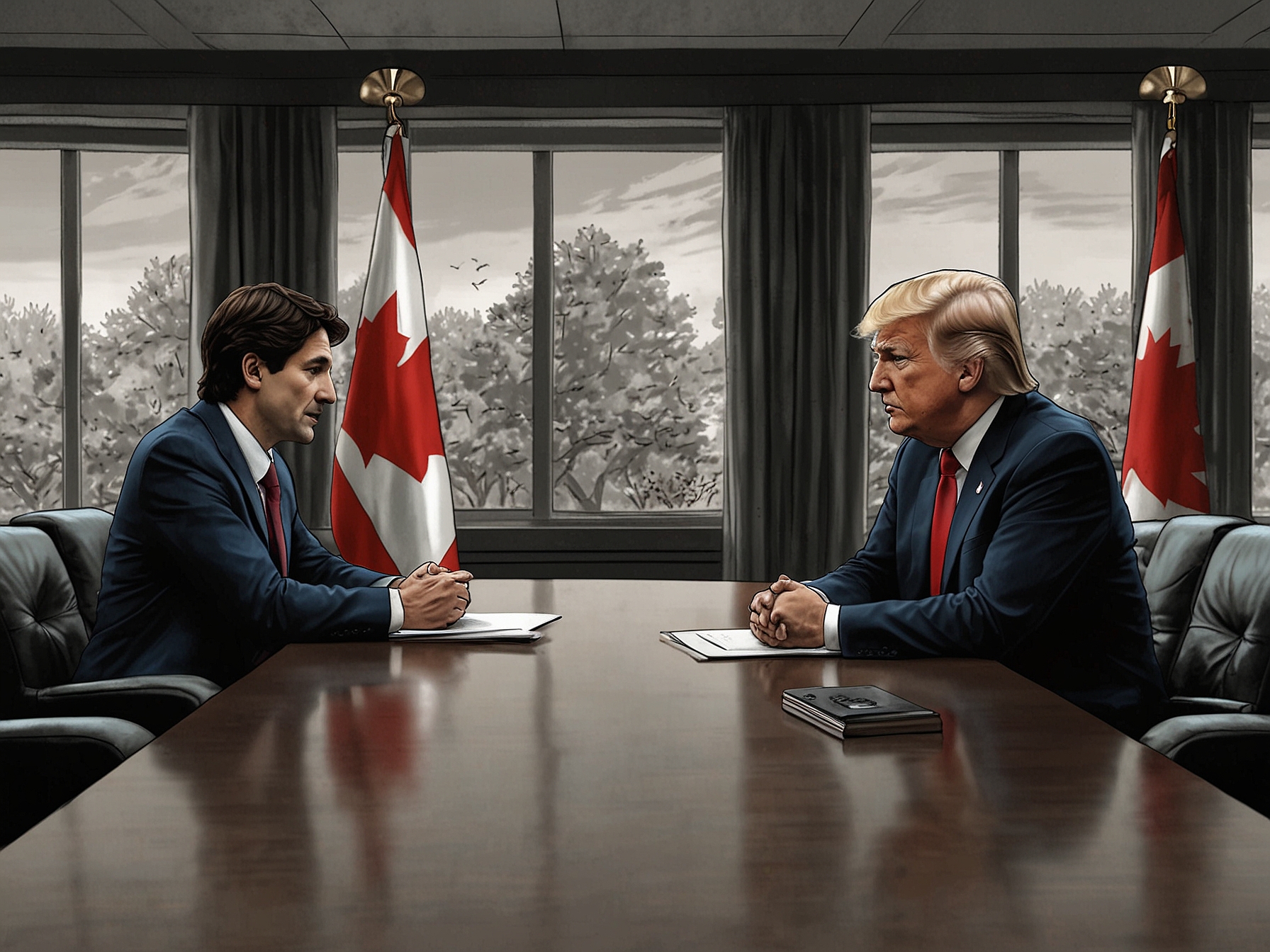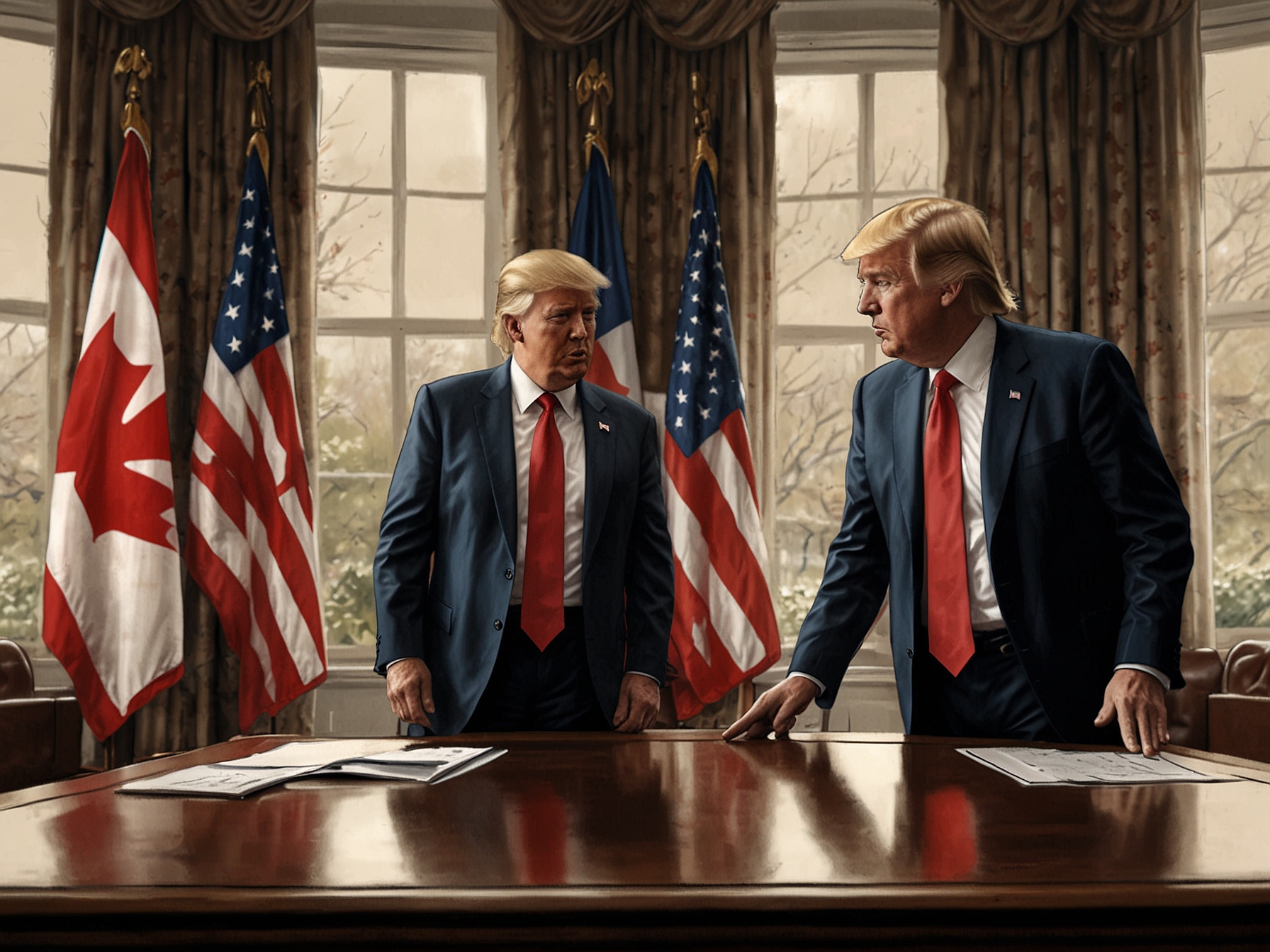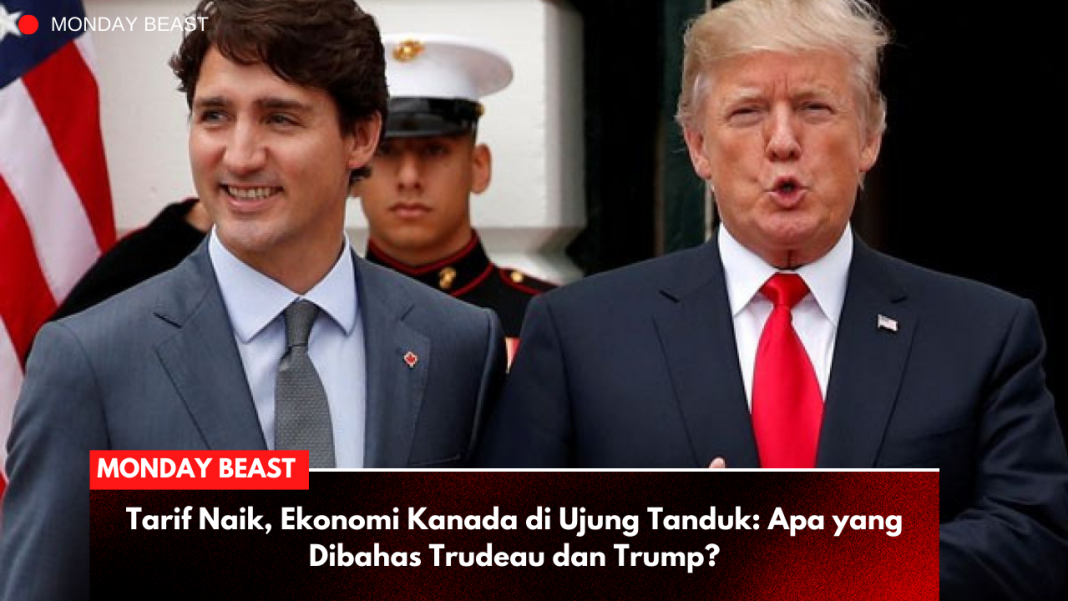The economic landscape of Canada faces a daunting challenge. President-elect Donald Trump has threatened to raise tariffs on imported goods up to 25 percent. This potential policy shift places dual pressure on Prime Minister Justin Trudeau—both economically and politically.
Trudeau’s recent conversations with Trump hinted at a complex negotiation. Although discussions were reported to be amicable, there remains no clear assurance of avoiding a tariff hike. In response, Trudeau decided to meet Trump in Florida, a move some analysts view as a bold attempt to directly navigate the fallout.

Decisions might need to be made swiftly; Canada is prepared to retaliate with similar tariffs on American goods if necessary. The stakes are high. An eyewitness recounted Trudeau’s departure from a hotel in West Palm Beach, Florida, heading to Trump’s Mar-a-Lago residence.
Accompanied by Minister of Public Safety Dominic LeBlanc, Trudeau’s journey aims to address the pressing tariff threat head-on. This face-to-face meeting could be pivotal. Yet, both sides’ acknowledgment of potential outcomes remains woolly, as neither Trump’s office nor Trudeau’s responded immediately to media inquiries.
Opinions are divided on whether Trump’s tariff threats are genuine or mere bluster—a bargaining tactic in future trade negotiations. Trudeau, however, firmly believes in the seriousness of Trump’s intentions. He openly stated, ‘Donald Trump, when he makes statements like this, he plans to follow through on them,’ reinforcing a sense of urgency that many observers echo.

Ensuring economic stability and cooperation is vital. Trudeau emphasized to Trump how critical collaboration is to prosperity on both sides of the border. He argued that imposing tariffs will hurt American consumers just as surely as they would harm Canadians.
Each negotiation brings a chance for progress, but as Trudeau has indicated, it will take active dialogue to keep the situation in check. Politically, Trudeau is trying to protect his party’s standing. The looming tariffs would be an unwanted blow during a period of declining popularity for the Liberal Party, as evidenced by current unfavorable polling against the Conservative Party in the lead-up to elections in October 2025.
For Trudeau, managing public opinion while navigating these negotiations is a key tightrope walk. The argument goes deeper. In 2022, the value of U.S. imports from Canada reached an impressive 614.3 billion Canadian dollars.

This trade relationship is not just a number; it represents nearly two million Canadian jobs connected directly with commerce. Indeed, from natural gas to automobiles, the ripple effects of trade policy are profound. If these tariffs spark retaliation, a cascade of economic setbacks could ensue.
Experts are weighing in on potential impacts. Scott Lincicome from the Cato Institute argued that while importers might absorb some cost, the real burden will likely fall on consumers. Price tags on everything from groceries to vehicles could skyrocket, hitting ordinary Americans right in their wallets—a reality many find hard to accept.
The automotive sector is particularly concerned. Flavio Volpe, president of the Auto Parts Manufacturers’ Association, highlighted the devastating effects a 25 percent tariff would impose. Many vehicles produced in Canada utilize parts sourced from the U.S., creating an intricate web of interdependence that’s difficult to untangle.
For Volpe, introducing tariffs essentially risks shutting down the industry, stating flatly, ‘There’s no point in running a business.’ Industry leaders are taking the threat seriously. Catherine Cobden, president of the Canadian Steel Producers Association, warned that tariffs on Canadian steel would ripple through various sectors.
Higher expenses could inflate costs across automotive, energy, and construction industries, impacting consumers in both Canada and America. Her message is clear: the economic implications are significant and immediate. As Trudeau prepares for ongoing negotiations, his government is conceptualizing multiple responses to the tariff threats, including a worst-case scenario of implementing retaliatory tariffs.
With a cabinet team at the ready, their goal is to devise a strategy in case talks reach an impasse—similar preparations were undertaken during the last Trump administration. The stakes are personal for Trudeau. His government has experienced the ramifications of tariffs in the past.
The past battle with U.S. tariffs on aluminum and steel showcased the importance of strategic targeting—Canada’s countermeasures then focused on products from key Republican states like Florida and Kentucky. It appears Trudeau is determined to play this game carefully.
There’s a national discourse brewing about these economic tensions. As we move to a more interconnected world, any increase in tariffs could signal a shift toward protectionism that complicates an already delicate relationship between neighboring countries. For both Canada and the U.S., the outcome of these discussions carries lasting implications for trade, politics, and the economies of millions of everyday citizens.




